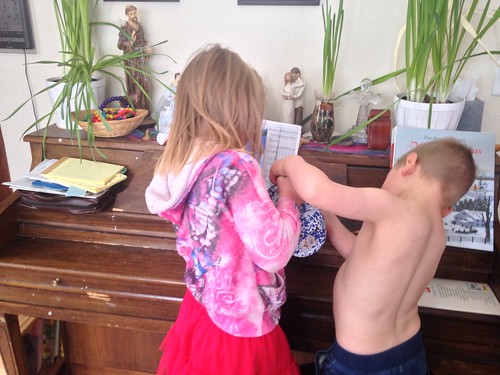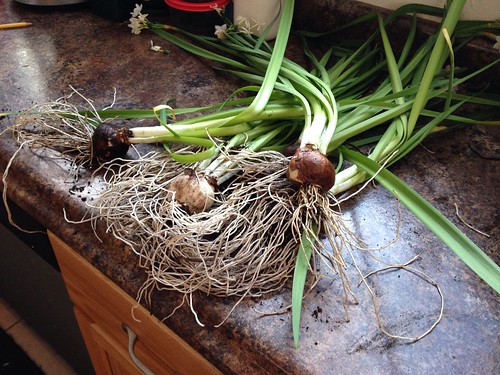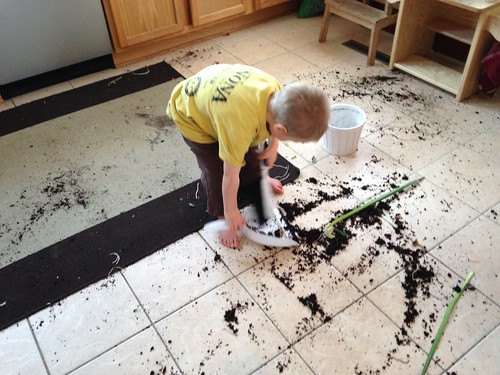
Even though spring, summer, and even fall appear to be more natural times for plant study. I actually find there is a lot we can do in the winter.
Growing things indoor in the winter is good for your health. Green growing things help keep your indoor air cleaner and your visual space brighter. We planted some narcissus bulbs at the beginning of Advent and they bloomed just in time for Christmas. Forcing bulbs indoors during the winter is actually quite easy to do and for me, seeing fresh flowers in winter always helps my mood.
In the spring and summer, I admit I’m not as inclined to let the kids explore and experiment with what’s in the garden outside. Participate in growing our own food is a big lesson on its own and they learn a lot about plant care, but taking apart plants isn’t something we really delve into as much as when we are doing productive family work. We do some, for sure, but winter sprouting, root study, and plant exploration are opportunities to be more in depth with some of those areas. A sunny winter window is a great place to grow things, particularly without worrying about overheating which can be a problem at other times of the year.
In addition to forcing bulbs indoors, right now we have 3 other active active plant experiments sitting on our shelf. We are rooting a houseplant from a cutting, turning white flowers blue with colored water, and forcing a bulb in a vase with colored water to see if it has the same effect. I have a few other plant exploration projects we will likely do soon, such as sprouting bean seeds and, later in the winter/spring, starting seeds and growing a few plants to prepare for our outdoor garden.
Growing fresh green plants in the middle of the winter is not only easy, it is beneficial for both the curriculum and your house and home! Not to mention the opportunities for practical life that present themselves in cleaning up after yourselves ….
Are you looking for more technical/scientific botany work to go with your hands on experiments? Check out the botany materials we use in our home and the printable plant charts available from Elementary Observations. For older students, dive into photosynthesis with printable manipulatives and task cards, available on Teachers Pay Teachers.
Do you do any indoor plant study in the winter? I would love to hear more about it, so make sure you leave me a note and include a link if you have blogged about winter plant study!
****
Want more ideas for implementing Montessori at home?
Join our Premium Montessori Content Group today!








This is wonderful! We have a grow light in our classroom and little S just planted the amaryllis bulb she got for Christmas.
I am not much of a green thumb and every turn of our growing journey is new.